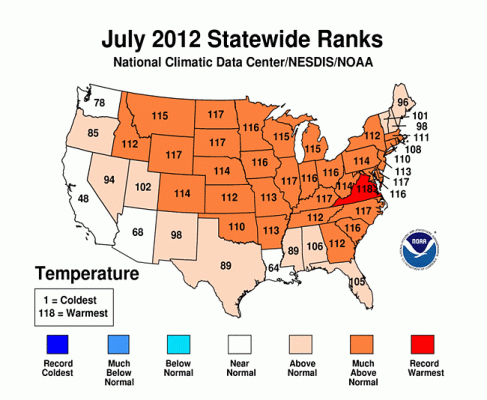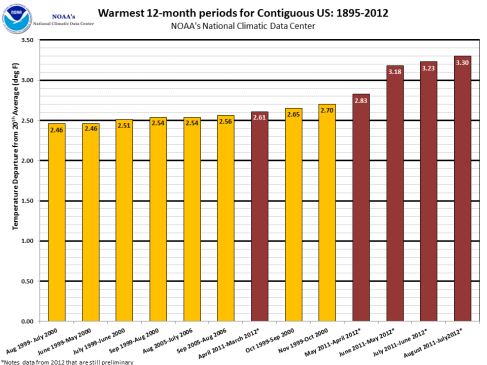The hottest month in US history has brought with it a number of wide-ranging impacts, according to reports from the National Climate Data Center.
Wildfires
During the month of July over 2 million acres were consumed by forest fires across the country. In Oregon, the Long Draw fire consumed 560,000 acres in a single blaze. This was the largest fire ever to affect Oregon since record-keeping began in the 1840s. Other large fires affected the heartland which is currently sweltering under the most intense heatwave on record.
Severe Impacts to US Agriculture
According to the NCDC, the nation’s primary corn and soybean belt experienced its eighth driest July, its third driest June-July, and its sixth driest growing season (April-July) since records began in 1895. This drought has had severe impacts on US crops forcing many farmers to simply plough their ailing fields back into the soil, abandoning crops in hopes that next year will be better.
Fully half of the US corn crop is in poor to very poor condition with 37% of the US soybean crop also in the lowest rating assigned by the US Department of Agriculture. Due to these impacts, it is expected that US corn output will fall by 13% and US Soybean output will fall by 11%. These declines are expected in spite of the US having planted its largest corn crop in 75 years. The result is that corn prices are flirting with record high prices at over $8 per bushel.
Area of Severe Drought Doubles
The area of the Nation suffering from extreme to exceptional drought more than doubled from 10% at the end of June to 22% at the end of July. Areas hardest hit were the heartland of the United States: Oklahoma, Kansas, Illinois, Missouri, Iowa, Arkansas, Nebraska.
Hottest 12 Months in US History For the Past Four Months Running
Just last month, the hottest 12 month period in US history was recorded. Wait one month, and the previous record set in June has been broken again. So, as of this report, the US is currently experiencing ongoing increases on top of a long period of already record high temperatures. In fact, the same thing happened in April and May as well. We’ll have to see if August breaks the record 3.3 degrees Fahrenheit departure from average temperatures set in July.
Global Warming Link Established
Earlier this month NASA scientists established a link between extreme summer heating events and human caused global warming. They did this by tracking temperatures since 1951 and showing that under the current regime of ever-increasing levels of CO2, extreme summer heating events like the one experienced this year are now 30 times more likely to occur than they were sixty years ago. Though a handful of oil company funded scientists have taken issue with this assessment, the data presented by NASA couldn’t be clearer as it tracks the increasing frequency of these extreme events.
“This is not some scientific theory. We are now experiencing scientific fact,” NASA scientist James Hansen told The Associated Press in an interview.
Links:

















